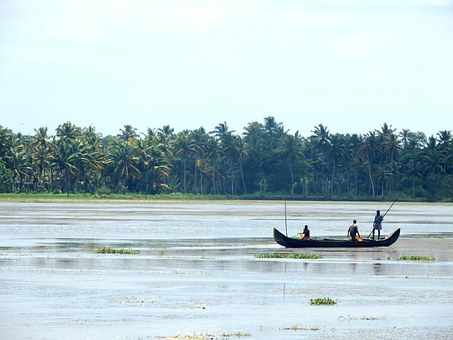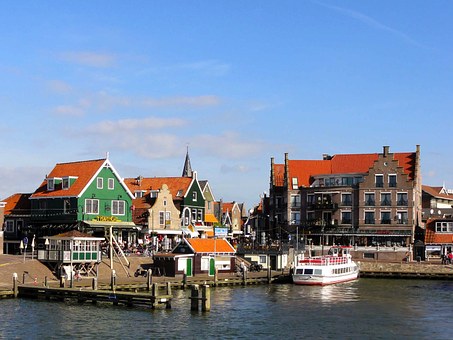Boating Buoys: A Guide To Aids To Navigation You May Encounter On The Water

Aids to navigation is a system or a "Road Map" of devices on the water and are provided to help the operator to determine his position and course
. The Aids to Navigation System also warns the operator of dangers or obstructions in the waterway or can advise the operator of the location of the best or preferred route.When you refer to the "Chart" that you should have on board of the area you are boating, note that it will include markers, buoys, as well as beacons and lighthouses.
FYI: A popular memory aid and a "RULE" for this system is "Red Right Returning"
The red buoys will always be on your right or starboard side, when you are returning or heading upstream.

The Buoys are reversed when heading downstream, green is on your starboard and red is on your port.
Port Hand Buoy
marks the port (left) side of a channel and must be kept on the port (left) side of your craft when going upstream
is colored green
displays identification letter(s) and odd number(s)
if it has a light, the light is green and is a flashing (FL) 4s or quick flashing (Q) 1s
Starboard Hand Buoy
marks the starboard (right) side of a channel and must be kept on the starboard (right) side of the craft when proceeding upstream
is colored red
displays identification letter(s) and even number(s)
if it carries a topmark, the topmark is a single red cone, points upwards
if it carries a light, the light is red and is flashing (FL) 4s or Quick Flashing (Q) 1s
Cardinal Buoys
Cardinal Buoys are used to indicate the direction in which the safest water exists. This diagram shows the location of the danger for each of the four Cardinal Buoys.
North Cardinal Buoy
is located so that the safest water exists to the north of it;
is colored black and yellow in approximately equal areas above the waterline;
the top half of the buoy is black and the lower half is yellow;
if it carries a top mark, the top mark is two black cones, one above the other, points upward;
if the buoy carries a light, the light is white and is a quick flashing (Q) 1 s or very quick flashing (VQ) 0.5 s light; and
if the buoy does not carry a light, it is normally spar shaped.
East Cardinal Buoy
is located so that the safest water exists to the east of it;
is colored black with one broad horizontal yellow band;
if it carries a top mark, the top mark is two black cones, one above the other, base to base
if the buoy carries a light, the light is white and is a group quick flashing three Q(3) 10 s or a group very quick flashing three VQ(3) 5 s light; and
if the buoy does not carry a light, it is normally spar shaped.
South Cardinal Buoy
is located so that the safest water exists to the south of it;
is colored black and yellow in approximately equal areas above the waterline;
the top half of the buoy is yellow and the lower half is black
if it carries a top mark, the top mark is two black cones, one above the other, points downward;
if the buoy carries a light, the light is white and is a group quick flashing six plus long flash (Q(6) + LFl) 15 s
light or group very quick flashing six plus long flash (VQ(6) + LFl) 10 s light; and
if the buoy does not carry a light, it is normally spar shaped.
West Cardinal Buoy
is located so that the safest water exists to the west of it;
is colored yellow with one broad black horizontal band;
if it carries a top mark, the top mark is two black cones, one above the other, point to point;
if the buoy carries a light, the light is white and is a group quick flashing nine Q(9) 15 s light or a group very quick flashing nine VQ(9) 10 s light; and
if the buoy does not carry a light it is normally spar shaped.
Cautionary Buoy
marks an area where mariners are to be warned of dangers such as firing ranges, racing courses, seaplane bases, underwater structures of areas where no safe through channel exists and of traffic separations;
is colored yellow;
displays identification letter(s);
if it carries a top mark, the top mark is a single yellow "X" shape; and
if it carries a light, the light is yellow and is a flashing (Fl) 4 s light.
Diving Buoy
marks an area where scuba or other such diving activity is in progress;
is colored white;
carries a red flag not less than 50 centimeters square with a white diagonal stripe extending from the tip of the hoist to the bottom of the fly; and
if it carries a light, the light is yellow and is a flashing (Fl) 4 s light.
Keep Out Buoy
marks an area where boats are prohibited;
is colored white;
has an orange diamond containing an orange cross on two opposite sides and two orange horizontal bands, one above and one below the diamond symbols; and
if it carries a light, the light is yellow and is a flashing (Fl) 4 s light.
Control Buoy
marks an area where boating is restricted;
is colored white;
has an orange, open-faced circle on two opposite sides and two horizontal orange bands, one above and one below the circles; a black figure or symbol inside the orange circles indicates the nature of the restriction in effect; and
if it carries a light, the light is yellow and is a flashing (Fl) 4 s light.
Hazard Buoy
marks random hazards such as rocks and shoals;
is colored white;
has an orange diamond on two opposite sides and two orange horizontal bands, one above and one below the diamond symbols; and
if it carries a light, the light is yellow and is a flashing (Fl) 4 s light
Information Buoy
displays, by means of words or symbols, information of interest to the mariner;
is colored white;
has an orange, open-faced square symbol on two opposite sides and two orange horizontal bands, one above and one below the square symbols; and
if it carries a light, the light is yellow and is a flashing (Fl) 4 s light.
Swimming Buoy

marks the perimeter of a swimming area
is colored white; and
if it carries a light, the light is yellow and is a flashing (Fl) 4 s light.
by: Nick Simmons Boating Beacons, Signs, And Other Aids To Navigation How To Boat Safely By Using Charts, Compasses And Anchors Safe Boating, Responsible Boating And Sharing The Waterways Portsmouth UK RYA Level 1 & 2 Powerboat training courses and ICC Houseboat Plans To Create Your Own Houseboat Personal loans - sailing you through bad times Boat Tours That Have A Calming Effect Kerala Houseboat Tour – Beautiful Options to Explore Enchanting Backwaters typical examples of electric inflatable boats On Boat Rental Paris Looks Like A Majestic Piece Of Art Delivery Companies Make It Plain Sailing To Reach Business And Customers In Sale Boat Tours And Many Other Attractions In Your Region Garnish One Benign Safety For Your Shaver With Sailboat Bedding